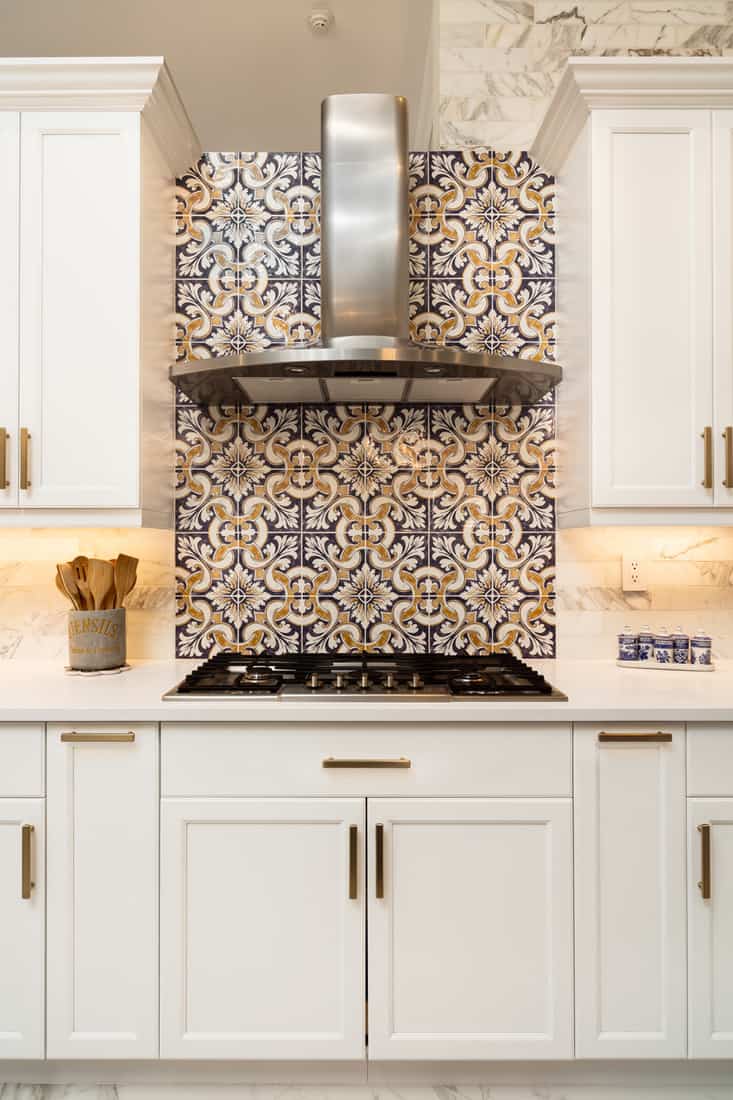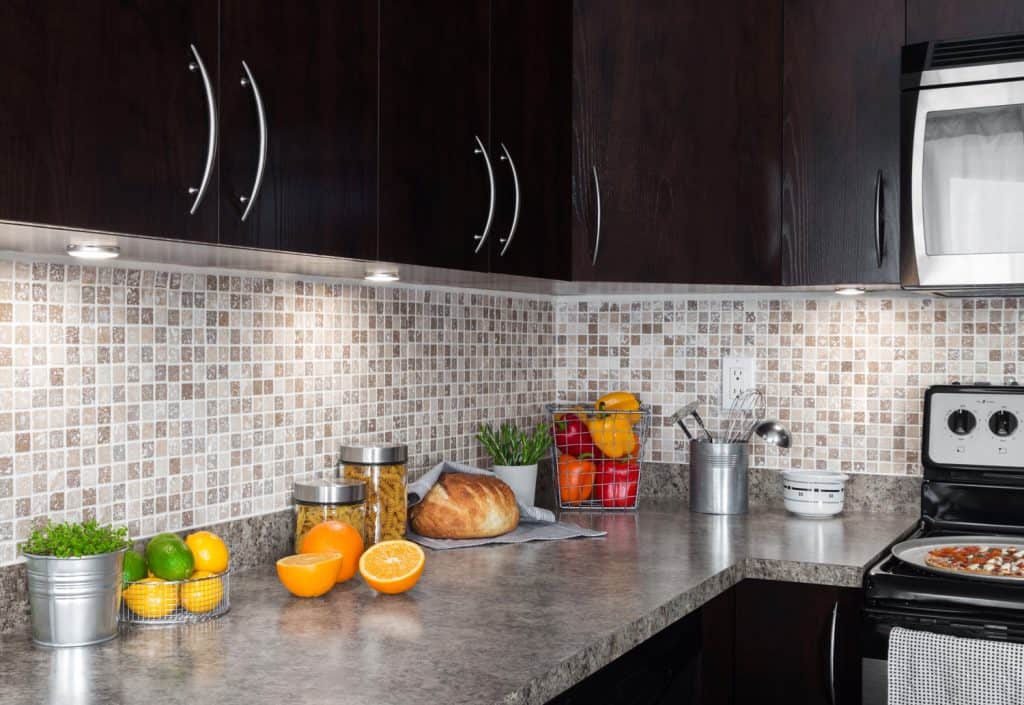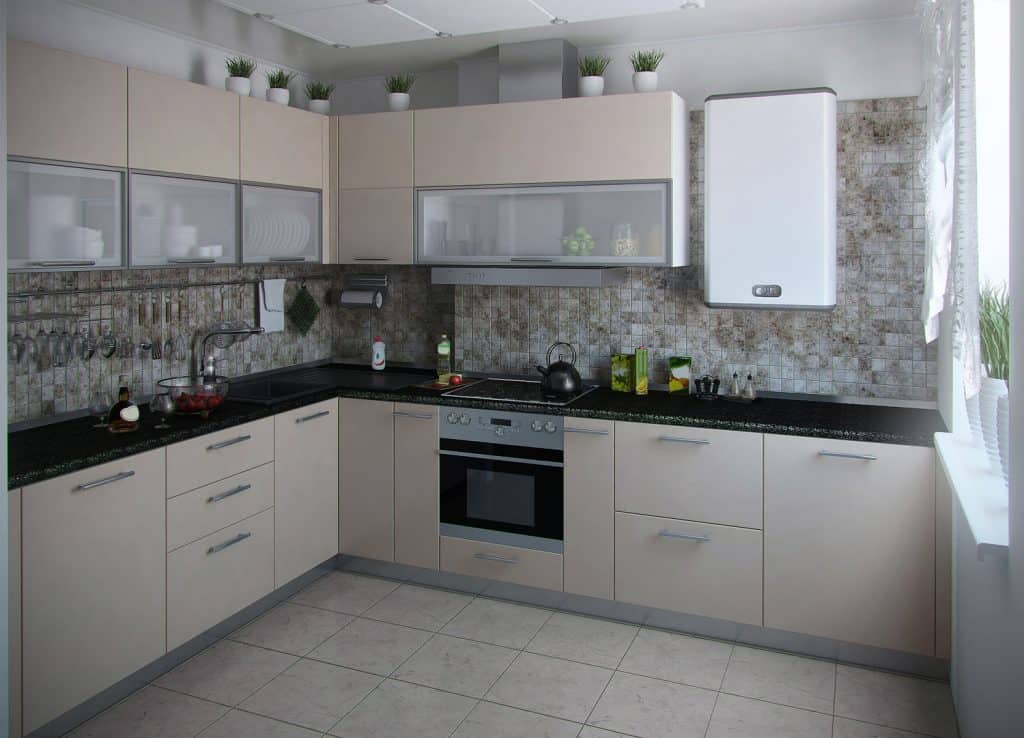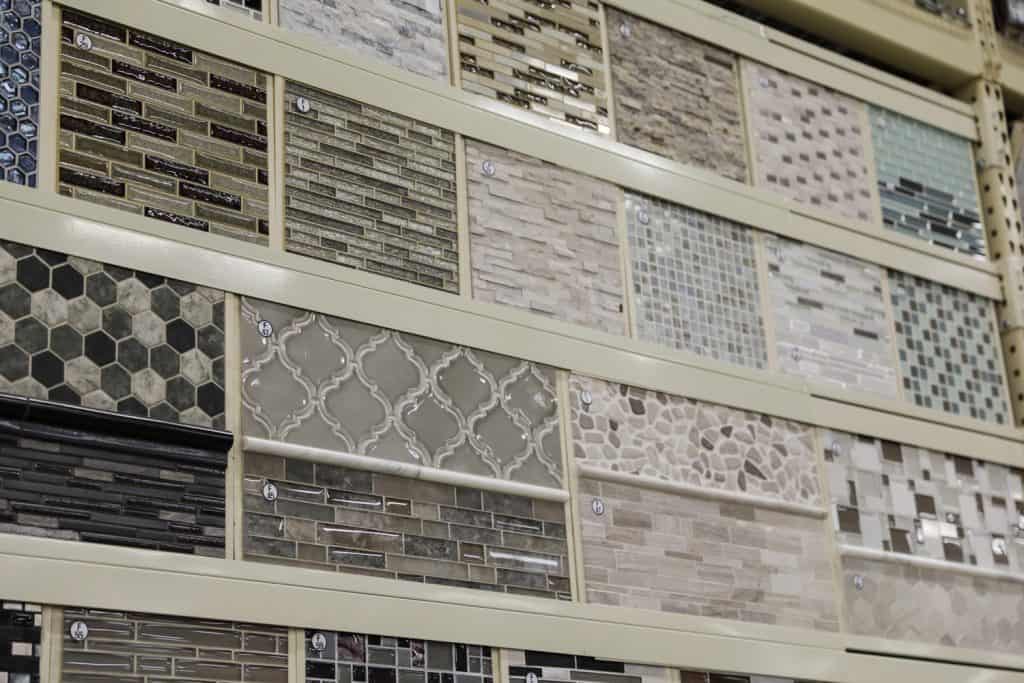A backsplash is an essential part of your kitchen. It helps keep the walls clean, dry, and looking good. But you may wonder if it goes behind the cabinets, fridge, and stove. We’ve researched backsplashes for you, including their function, materials, and styles, to help answer this question for you.
When placing a backsplash, remember to keep both function and aesthetics in mind.
- If the wall area is prone to splatter from cooking food, then put up a backsplash. This would include behind the stove.
- If the area is susceptible to messes from preparing food, then a backsplash is warranted. This would include the area in between the top of the lower cabinets and the bottom of the upper cabinets.
- If the area is hidden, this area doesn’t need a backsplash. This means no backsplash behind the refrigerator.
We know these answers just made you think of more questions. The rest of this post will help clarify things for you. Continue reading as we delve more into the world of backsplashes.

Why is a backsplash needed in these specific locations?
Even if you are the most meticulous chef in the world, messes will happen. When you cook, grease, steam, and other substances can discolor and damage the wall behind the stove. A backsplash prevents this. Backsplash also helps with clean-up since it’s easier, for example, to clean sauce from a backsplash than from a wall.
Along with this, a backsplash keeps water and other liquids from seeping behind the cabinets and causing damage to the wall there. This is why putting a backsplash between the bottom of the upper cabinets, and the top of the countertops or lower cabinets is needed. This will also help prevent mold from growing behind the cabinets. Adding a backsplash between the cabinets will provide aesthetic consistency and make the room seem bigger as well.
We sometimes add affiliate links and content that was curated and created by our team with the help of advanced ai tools to help showcase the best design styles.

A backsplash is not needed when it can’t be seen because it’s not doing anything to enhance the room's aesthetic. It is also unnecessary if it is not being used to protect the area from substances that can harm the walls. This is why it is not needed behind the fridge.
How important is a backsplash?
We know that one of the first things that popped into your mind while reading this post was that you had been in houses before where the kitchen was backsplash-free, and you are now wondering why we are saying a backsplash is important in your kitchen.
Besides making cleaning easier and protecting the walls from moisture, a backsplash enhances the look of a kitchen through color, texture, and patterns. It also helps hide blemishes, holes, and irregularities in the walls. It makes the kitchen look more elegant, clean, and complete. Using a backsplash helps create a focal point in the room as well.
Financially, it will upgrade your kitchen, which will, in turn, increase the value of your home.
Where should backsplash begin and end?
For backsplash to achieve all of those aesthetic goals listed above, it has to look good. If it looks awkward or incomplete, the focal point becomes more of an eyesore. And that brings up the question: where does it start and end? The problem with answering this question is that every kitchen is different, so there is not one right answer.
For example, some people believe that if you don’t put the backsplash from the countertop to the bottom of the upper cabinets, it would look outdated. Others believe that you have to watch how the counters end and may have to taper your tile or have backsplash awkwardly ending in open space.

If you have a smaller kitchen, you may want to have backsplash go all the way up to the ceiling to make the room look bigger. But if you have a galley kitchen, having too much backsplash, including wrapping around the corners, could make the room look unbalanced and awkward.

Just remember the main function of the backsplash - to protect from messes - and then create an aesthetic that enhances the kitchen’s look.
Can you use peel and stick backsplash behind a stove?
One thing not mentioned above was the consideration of the cost for a backsplash. One of the most inexpensive ways to put up backsplash is to use the peel and stick variety, but there are a few concerns about this type of backsplash, including it being temporary or looking inexpensive.
Click here to see peel and stick subway tiles on Amazon.
Peel and stick backsplash lasts three to five years if maintained properly and is the most inexpensive variety of backsplash. The primary concern, though, is if you can use a peel and stick behind a stove.
Most peel and sticks are heat resistant, but not all of them are. You also have to take into consideration what type of stove you have. Many peel and stick backsplashes can be near heat, but there can be problems if near an open flame, which is a concern if you have a gas stove. The best thing to do is read the instructions that come with the backsplashes to make sure it’s heat resistant and compatible with the type of stove you have.

How do you protect a backsplash behind a stove?
Of all the areas in the kitchen that have a backsplash, the area behind the stove is the one to focus on. Not only does the backsplash have to handle the heat, as mentioned above, but it also gets the most abuse. So how do you protect that area?
The first thing to remember is that the backsplash should be non-porous. This can either be done by making sure that the material itself is non-porous or by applying a sealant to both the backsplash material and the grout. This will keep the backsplash from absorbing what gets splashed on it and maintain its original look.
Make sure to keep your backsplash clean! Even if your backsplash has sealant on it, you don’t want acidic splatter or grease to discolor the backsplash or damage the grout.
So just remember:
Backsplashes should go behind the stove and between the countertop and the bottom of the upper cabinets, but not behind the fridge. The backsplash should be wherever there will be food and water splatter, but not where it can’t be seen. Make sure it works well with the room’s natural aesthetic and keep it clean, and it will be an impressive focal point in your kitchen.

